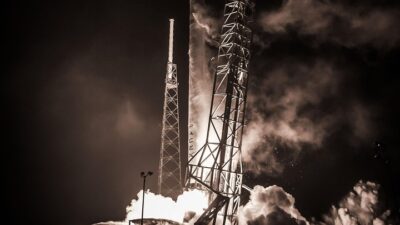In recent years, the world has witnessed a significant pivot towards sustainable energy solutions, driven largely by the need to combat climate change and reduce our reliance on fossil fuels. At the forefront of this movement is Tesla, Inc., a company that has redefined the automotive landscape and embraced a comprehensive approach to sustainability. From electric vehicles (EVs) to solar energy solutions, Tesla is not just reshaping the way we drive but also how we think about energy consumption.
Revolutionizing Transportation: The Electric Vehicle Era
Tesla’s journey began with a singular focus on electric vehicles, with the introduction of the Roadster in 2008 marking its entry into the automotive market. However, it was the Model S, launched in 2012, that truly showcased the potential of EVs. The Model S combined performance, luxury, and an innovative design, proving that electric cars could rival traditional gas-powered vehicles in both efficiency and desirability.
Over the years, Tesla has expanded its EV lineup to include the Model X, Model 3, and Model Y, catering to various market segments. Each new model has pushed the boundaries of battery technology, range, and performance. Tesla now boasts an impressive range of up to 400 miles on a single charge, shattering the stereotype that electric cars are limited in their capabilities.
Moreover, Tesla’s commitment to sustainability extends beyond the vehicles themselves. By establishing a vast network of Superchargers across the globe, Tesla has made long-distance travel feasible for electric cars. This infrastructure has played a crucial role in the widespread adoption of EVs, allowing drivers to charge quickly and efficiently.
Beyond Vehicles: Integrating Solar Solutions
Tesla is not just a car manufacturer; it is a holistic energy company. In 2016, Tesla acquired SolarCity, propelling it into the solar energy sector. This acquisition allowed Tesla to integrate solar technology with its electric vehicle ecosystem seamlessly. The introduction of the Tesla Solar Roof exemplifies this synergy, offering homeowners an aesthetically pleasing and efficient solution to generating clean energy.
The Solar Roof replaces traditional roofing materials with solar tiles that generate electricity without compromising on design. This innovative solution aligns with Tesla’s mission to accelerate the world’s transition to sustainable energy. Moreover, Tesla’s Powerwall, a home battery storage system, allows homeowners to store excess energy generated by solar panels for later use. This creates a self-sufficient energy solution, reducing reliance on the grid and enhancing energy security.
Energy Management and Sustainability
Tesla’s ambition goes beyond electric cars and solar panels. The company is leveraging technology to create a more integrated and efficient energy ecosystem. The Tesla app allows users to monitor their energy usage, manage their electric vehicles, and control their home energy systems in one platform. This interconnected approach emphasizes Tesla’s commitment to sustainability, enabling consumers to make informed decisions about their energy consumption.
In addition, Tesla’s involvement in energy production extends to large-scale battery storage projects. The company has developed utility-scale battery solutions that allow for the stabilization of energy grids powered by renewable sources. These projects help mitigate the intermittent nature of renewable energy generation, such as wind and solar, by storing excess energy for use during peak demand periods.
The Future of Energy: Challenges and Innovations
While Tesla has made significant strides in shaping sustainable energy, the road ahead is fraught with challenges. The transition to electric vehicles requires the development of a robust charging infrastructure, and as sales of EVs increase, so does the need for sustainable battery production to minimize environmental impacts. Furthermore, the availability of raw materials, such as lithium and cobalt, poses supply chain concerns that must be addressed for long-term sustainability.
However, Tesla has responded with innovation. The company is continuously exploring new battery technologies, such as the 4680 cell, which promises to increase efficiency and reduce production costs. Moreover, Tesla’s investment in recycling technologies aims to mitigate the environmental impact of battery disposal, ensuring that valuable materials can be reused and repurposed.
Conclusion: A Vision for a Sustainable Future
Tesla is not just an automaker; it is a pioneer in the transition to sustainable energy. By integrating electric vehicles, solar solutions, and energy management systems, Tesla is creating a comprehensive ecosystem that encourages individuals and businesses to shift towards renewable energy sources. As the world grapples with the urgent need for sustainable solutions, Tesla’s commitment to innovation and environmental responsibility positions it as a key player in shaping a more sustainable future.
As we move towards a low-carbon economy, Tesla’s vision can serve as a roadmap for other industries looking to innovate while being mindful of their environmental impact. With its relentless pursuit of technological advancement, Tesla continues to challenge conventions and inspire a global movement towards sustainability.



